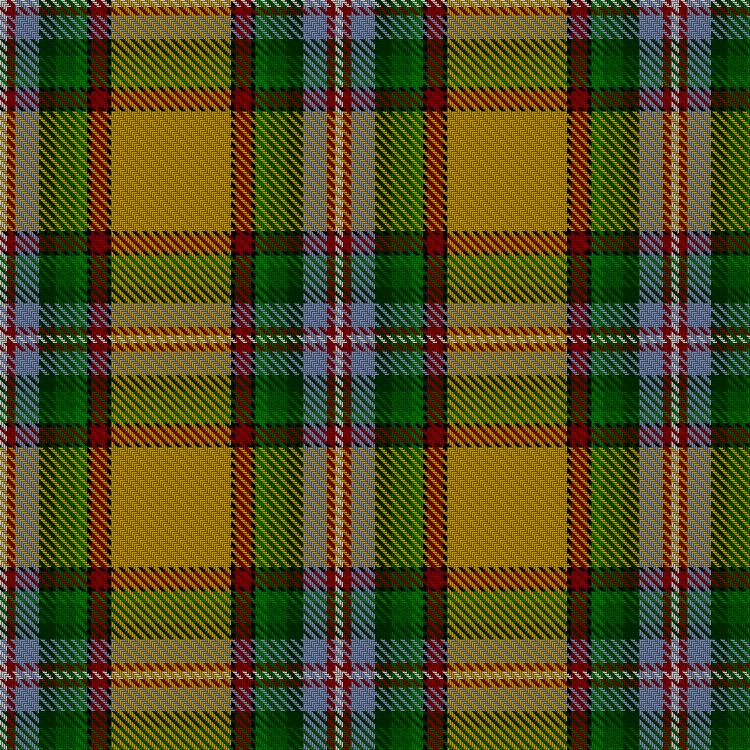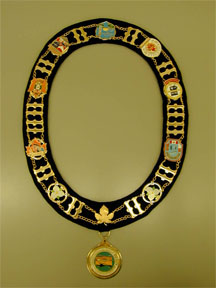
Our warm, sunny climate, fertile fields and stunning waterways are represented in this logo, approved by Council in June of 2014.
Contact the Communications Department for guidelines on usage and to obtain an electronic copy.
This website uses cookies to enhance usability and provide you with a more personal experience. By using this website, you agree to our use of cookies as explained in our Privacy Policy.
Essex County has a long history that we are proud to share and continue exploring.
The early history of Essex County is that of the Indigenous Peoples who first inhabited this region. These words are recited at the beginning of Essex County council meetings and at other county events:
We acknowledge the land on which the County of Essex is located is the traditional territory of the Three Fires Confederacy of First Nations, comprised of the Ojibway, Odawa and Potawatomie Peoples.
We specifically recognize Caldwell First Nation and other First Nations which have provided significant historical and contemporary contributions to this region.
We also value the contributions of all Original Peoples of Turtle Island, who have been living and working on this land from time immemorial.
The County of Essex was one of the first areas in Ontario where Europeans settled. This settlement predates Canadian Confederation in 1867. From the beginning, it has been a diverse, dynamic and welcoming community.
French soldiers from Fort Pontchartrain or Fort Detroit began settling on the Canadian side of the Detroit River about 1747, laying down arms to become farmers, craftsmen, merchants or fur traders.
Indigenous communities were already present, with the Wyandot and Huron people near present-day Amherstburg and the Ottawa people near present-day Windsor. There is still a large and active Francophone community in Essex County.
We were a pivotal location in the War of 1812. The conflict's first fatality occurred when a British soldier was killed in River Canard.
Sir Isaac Brock and Chief Tecumseh met at Fort Malden in what is now Amherstburg to plan the siege of Detroit. The barracks that housed red-coated soldiers and the defensive grass trenches through which they traveled remain a popular tourist attraction on the banks of the Detroit River.
Tens of thousands of refugee slaves fled bondage in America via the Underground Railroad and thousands of them found freedom on our welcoming shores. Their contributions and spirit helped shaped Essex County and, indeed, the country.
Their legacy is proudly celebrated with monuments and museums including the Amherstburg Freedom Museum and the John Freeman Walls Historic Site and Underground Railroad Museum in Lakeshore.
Learn more about the early settlement history of Essex County and explore our Historical Documents Archive
Essex County logo and current flag

Our warm, sunny climate, fertile fields and stunning waterways are represented in this logo, approved by Council in June of 2014.
Contact the Communications Department for guidelines on usage and to obtain an electronic copy.
Previous Essex County logo and flag
The water that surrounds us on three sides and our agricultural foundation are featured prominently in an earlier version of the County of Essex flag.
You can purchase this fabric pattern by contacting the County of Essex

Edythe Bakes of Leamington designed the tartan in 1983. It is registered with the Canadian government and the Museum of Tartans in Scotland.
The colours represent:
Bakes was born in 1902 and spent her early years in Orillia. She designed and made her own clothing.
She moved to Essex County with her husband, Arthur Bakes, a branch manager for H.J. Heinz Co. in Leamington.

The ceremonial chair was used by the County Warden until 1947. It is now located in the Warden's office at the Essex County Civic Centre.
The chair, which resembles a throne, was carved out of black walnut in the late 19th century. It is covered with red fabric. Its back is over eight feet.
The chair was moved after 1947 to Fort Malden and then, in 1974, it was moved to the Hiram Walker Historical Museum.
It was returned to the County of Essex in 2003 when Windsor Mayor Michael Hurst presented it to Warden Patrick O'Neil at the Warden's Banquet.

The warden's chain of office was designed following restructuring in 1999.
It features a large medallion with the County of Essex crest, a gold Canadian maple leaf, two Ontario trilliums and the crest of each of the seven local municipalities.
It is engraved with the names of Essex County wardens since 2000.
There have been more than 130 Wardens of Essex County since John Sloan was sworn in as the first Warden in 1853. Wardens used to serve one-year terms but now serve four-year terms.
| Warden | Year(s) |
|
John Sloan |
1853 |
|
John Sloan |
1854 |
|
S.S. MacDonnell |
1855 |
|
S.S. MacDonnell |
1856 |
|
Theodore Mallot |
1857 |
|
Joseph Mercer |
1858 |
|
Joseph Mercer |
1859 |
|
John O'Connor |
1860 |
|
Solomon Wigle |
1861 |
|
John O'Connor |
1862 |
|
Solomon Wigle |
1861 |
|
John O'Connor |
1862 |
|
John O'Connor |
1863 |
|
Solomon Wigle |
1864 |
|
Solomon Wigle |
1865 |
|
Solomon Wigle |
1866 |
|
George Shipley |
1867 |
|
Gore Atkin |
1868 |
|
William McGregor |
1869 |
|
William McGregor |
1870 |
|
Gore Atkin |
1871 |
|
William McGregor |
1872 |
|
William McGregor |
1873 |
|
Theodore Wigle |
1874 |
|
Luke Montreuil |
1875 |
|
Thomas B. White |
1876 |
|
James McKee |
1877 |
|
J. C. Patterson |
1878 |
|
John C. Iler |
1879 |
|
William McCain, Gosfield South |
1880 |
|
George Russel, Essex |
1881 |
|
Thomas Plant, Maidstone |
1882 |
|
George A. Morse, Leamington |
1883 |
|
Charles G. Fox, Gosfield South |
1884 |
|
Henry Morand, Sandwich East |
1885 |
|
N.A. Coste, Malden |
1886 |
|
Israel Dejardins, Tilbury West |
1887 |
|
Peter Wright, Gosfield South |
1888 |
|
George A. Wintemute, Maidstone |
1889 |
|
John A. Auld, Amherstburg |
1890 |
|
F.P. Bouteiller, Belle River |
1891 |
|
James S. Laird, Essex |
1892 |
|
Elisha McKee, Sandwich |
1893 |
|
Alfred Hairsine, Mersea |
1894 |
|
Marwood Barrette, Colchester North |
1895 |
|
Abraham Cole, Sandwich South |
1896 |
|
N.A. Coste, Malden |
1897 |
|
Joseph Durocher, Sandwich West |
1898 |
|
John Alex Buchanan, Tilbury West |
1899 |
|
J.D. Arthur Deziel, Belle River |
1900 |
|
John F. Millen, Gosfield North |
1901 |
|
William Price, Maidstone |
1902 |
|
William T. Wilkinson, Amherstburg |
1903 |
|
Richard R. Brett, Essex |
1904 |
|
Albert L. Lafferty, Sandwich West |
1905 |
|
James Selkirk, Mersea |
1906 |
|
James E. Brown, Kingsville |
1907 |
|
E.J. O'Neil, Sandwich South |
1908 |
|
James A. Coulter, Colchester North |
1909 |
|
James Hedrick, Rochester |
1910 |
|
Enos McCausland, Essex |
1911 |
|
Charles J. Montreuil, Walkerville |
1912 |
|
Robert Atkin, Malden |
1913 |
|
A.G. Tisdelle, Tilbury North |
1914 |
|
W.A. McCormick, Colchester South |
1915 |
|
Thomas Plant, Maidstone |
1916 |
|
Charles B. Whelan, Anderdon |
1917 |
|
Alexander McKee, Sandwich |
1918 |
|
Judson Scratch, Gosfield South |
1919 |
|
Edward Tellier, Rochester |
1920 |
|
E.S. Scratch, Gosfield North |
1921 |
|
Robert A. Halford, Sandwich South |
1922 |
|
Edward Crimmins, Amherstburg |
1923 |
|
William Woollatt, Ojibway |
1924 |
|
W.H. Ferris, Colchester South |
1925 |
|
D.M. Eagle, Sandwich |
1926 |
|
W.B. Clifford, Gosfield South |
1927 |
|
A.A. Marentette, Sandwich West |
1928 |
|
George A. Pearson, Tilbury West |
1929 |
|
James Gow, Leamington |
1930 |
|
Clarence A. Dewhirst, Rochester |
1931 |
|
Charles G. Baker, Mersea |
1932 |
|
R.F. Benoit, Tilbury North |
1933 |
|
A.B. Lukes, Amherstburg |
1934 |
|
Edward P. Morand, Tecumseh |
1935 |
|
George A. Hall, Colchester North |
1936 |
|
Albert Wallace, Maidstone |
1937 |
|
J.K. McLean, Harrow |
1938 |
|
H.A. Drouillard, Riverside |
1939 |
|
G.W. Doyle, Essex |
1940 |
|
J.H. Hennin, Sandwich South |
1941 |
|
Warden McCormick, Colchester South |
1942 |
|
Philias Grondin, Tilbury North |
1943 |
|
R.J. Voakes, Kingsville |
1944 |
|
Leo Sylvestre, Belle River |
1945 |
|
James Armstrong, Mersea |
1946 |
|
John O. Cahill, Sandwich West |
1947 |
|
George Bennett, Malden |
1948 |
|
Walter McMurren, Maidstone |
1949 |
|
Ferman Sinasac, Amherstburg |
1950 |
|
Barry Atkinson, Sandwich East |
1951 |
|
Morley Sanford, Kingsville |
1952 |
|
C.C. Morris, Tilbury West |
1953 |
|
Howard Bruner, Gosfield South |
1954 |
|
Percy McKee, Sandwich South |
1955 |
|
Thomas Dufour, Malden |
1956 |
|
Willard Morris, Tilbury North |
1957 |
|
Lawrence Brunet, Sandwich West |
1957 |
|
Eadie Watson, Mersea |
1958 |
|
W.T. Buchanan, Tilbury West |
1959 |
|
Douglas Layman, Kingsville |
1960 |
|
Robert McDonald, Sandwich West |
1961 |
|
Eugene Whelan, Anderdon |
1962 |
|
Phillip A. Morand, Ojibway |
1963 |
|
Ellison Bell, Mersea |
1964 |
|
Fred Cada, St. Clair Beach |
1965 |
|
Joe W. Newman, Gosfield North |
1966 |
|
John George, Belle River |
1967 |
|
Ray Hunter, Colchester North |
1968 |
|
Fred Bistany, Tecumseh |
1969 |
|
Anthony Dufour, Amherstburg |
1970 |
|
Robert Pulleybank, Sandwich South |
1971 |
|
Dick R. Thompson, Gosfield South |
1972 |
|
Jean Paul Gagnier, Tilbury North |
1973 |
|
Delmer Bridgen, Gosfield North |
1974 |
|
Charles Mitchell, Rochester |
1975 |
|
Clinton Tofflemire, Mersea |
1976 |
|
Percy Trepanier, Tilbury West |
1977 |
|
Hugh Rogers, Gosfield South |
1978 |
|
Omer Oriet, Tilbury North |
1979 |
|
Terrence Wright, Colchester South |
1980 |
|
John Menard, Sandwich West |
1981 |
|
John Martel, Malden |
1982 |
|
Jack Morris, Tilbury West |
1983 |
|
John Miner, Gosfield South |
1984 |
|
Shannon Olson, Rochester |
1985 |
|
Carl Davison, Colchester North |
1986 |
|
Raymond Robinet, Sandwich South |
1987 |
|
Carl Gibb, Malden |
1988 |
|
Carl Gibb, Malden |
1989 |
|
Gregory Stewart, Anderdon |
1990 |
|
Patrick O'Neil, Kingsville |
1991 |
|
Edward Renaud, Tecumseh |
1992 |
|
Tom Bain, Lakeshore |
1993 |
|
William Varga, LaSalle |
1994 |
|
Lyle Miller, Gosfield North |
1995 |
|
Allan Parr, Sandwich South |
1996 |
|
Patrick O'Neil, Kingsville |
1998 |
|
Patrick O'Neil, Kingsville |
1999 |
|
Patrick O'Neil, Kingsville |
2000 |
|
Patrick O'Neil, Kingsville |
2001-2003 |
|
Michael S. Raymond, LaSalle |
2004-2006 |
|
Nelson Santos, Kingsville |
2007-2010 |
|
Tom Bain, Lakeshore |
2011-2014 |
|
Tom Bain, Lakeshore |
2014-2018 |
|
Gary McNamara, Tecumseh |
2018-2022 |
|
Hilda MacDonald, Leamington |
2022- |
Contact Us
County of Essex
360 Fairview Ave W, Essex ON N8M 1Y6
Telephone: 519-776-6441
TTY: 1-877-624-4832
Fax: 519-776-4455
coeinfo@countyofessex.ca
Stay Informed
Subscribe to receive email notifications of our news notices and announcements.